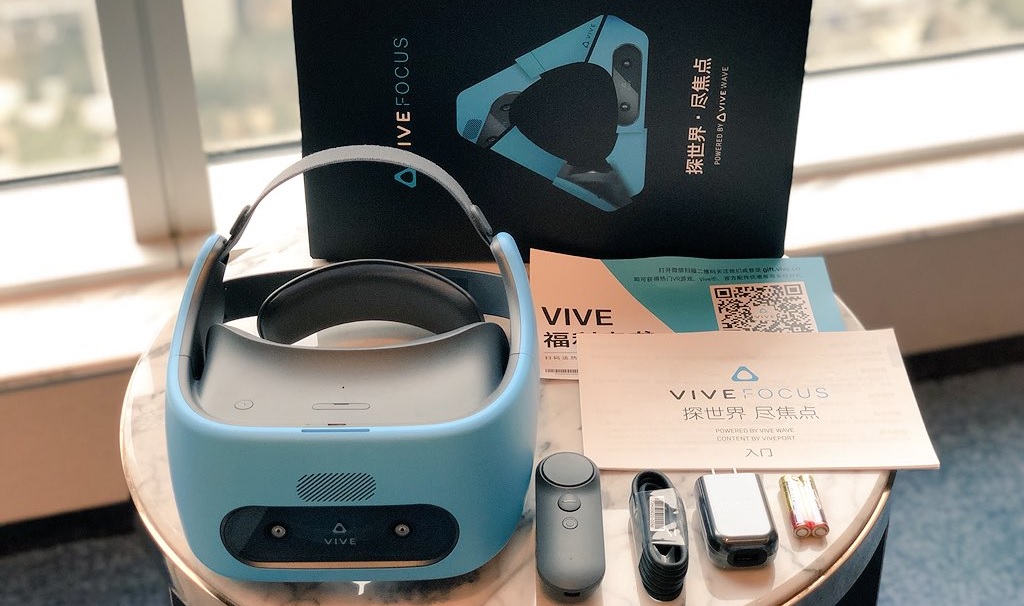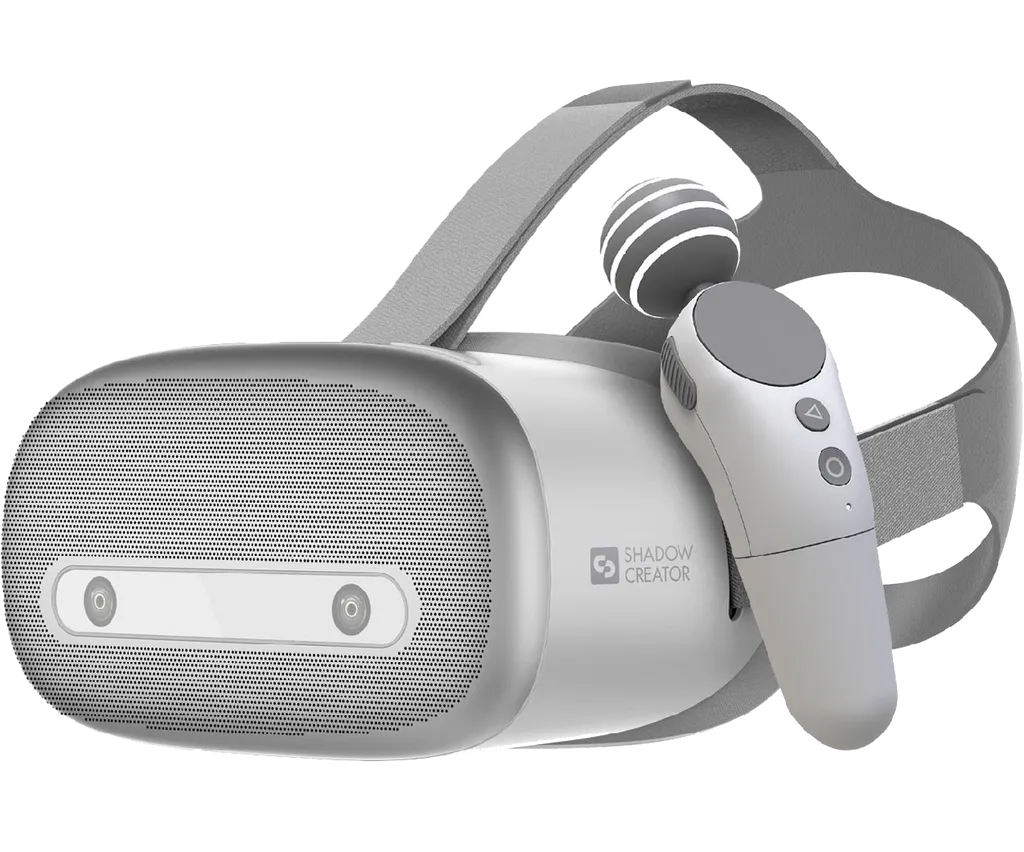A couple of weeks ago at an HTC event in San Francisco, CA I had the chance to talk with Dan O’Brien, General Manager at HTC. In addition to alluding to the company’s positive VR hardware sales, he also elaborated on the announcements surrounding the Vive Focus launch, the Vive Wave SDK, Viveport store, and specifically, their consumer-focused strategy for the budding standalone VR headset market.
The Vive Focus is a standalone VR headset with inside-out tracking (similar to Windows VR and Oculus Quest) that allows the user to walk around the room without cords, a PC, or even a smartphone powering it. It comes with a single 3DOF controller (which means you can rotate and move your wrist but can’t reach into the digital space like you can lean with your head) and is based on the Vive Wave SDK. There is a dev kit for two 6DOF Vive Focus controllers I got to try, but who knows how far off that is and it won’t be standard.
Interestingly, given the relatively premium price for Vive Focus (either $599 or $749 depending on the service package you purchase) it’s targeted specifically at the Enterprise market — not consumers.

“Right now, customers that will find [Vive Focus] valuable are typically early adopters that buy all the new tech, we’re fine with that, but the Wave SDK really enables us to talk to consumers with other hardware partners,” said O’Brien. “So Shadow Creator and Shadow VR, which is launching at a price point of $399, is a very consumer friendly price point. And with that, we have the ability to enter the mobile space at different price points with partners and not just putting the burden on ourselves.”
Naturally, as the discussion expanded and mentions another headset, powered by the Vive platform, at the same $399 price point as the upcoming Oculus Quest standalone, things got interesting. Clearly that’s their main competitor here, right?
“I haven’t [tried Quest], but I think it’s great for the community, it’s great for the VR industry, and I think we’re gonna learn a ton about price points and adoption levels,” said O’Brien. “We’re still talking about an early adopter consumer mix, we’re not at early mass yet. Products like Quest and some of the Wave platforms like Shadow VR will teach us a lot about those price points and adoption levels. We’re really focused on the products that we are delivering, like Focus, on giving a complete Enterprise solution and answering a lot of the problems we see out there.”
So it seems like a major piece of HTC’s strategy going forward, especially in the realm of standalone consumer VR, is partnerships with other hardware manufacturers that they can get to use the Wave SDK and access Viveport as their primary marketplace.
“The Wave SDK serves as two pieces: the backend for developers, to actually bring their content in and make it work with our standalone product, but it’s also the run time,” said O’Brien. “So we provide that run time to the hardware partners so that they can access that. The front-end is the actual store and the content distribution piece, so Viveport is the default store for all Vive Wave SDK hardware OEMs…We can’t go into the contractual details, but we are an open platform. We want to go work with other hardware partners that want to get into the space. But it’s not like just making one product and putting it into the market, you actually need a lot of content to support that.”


























